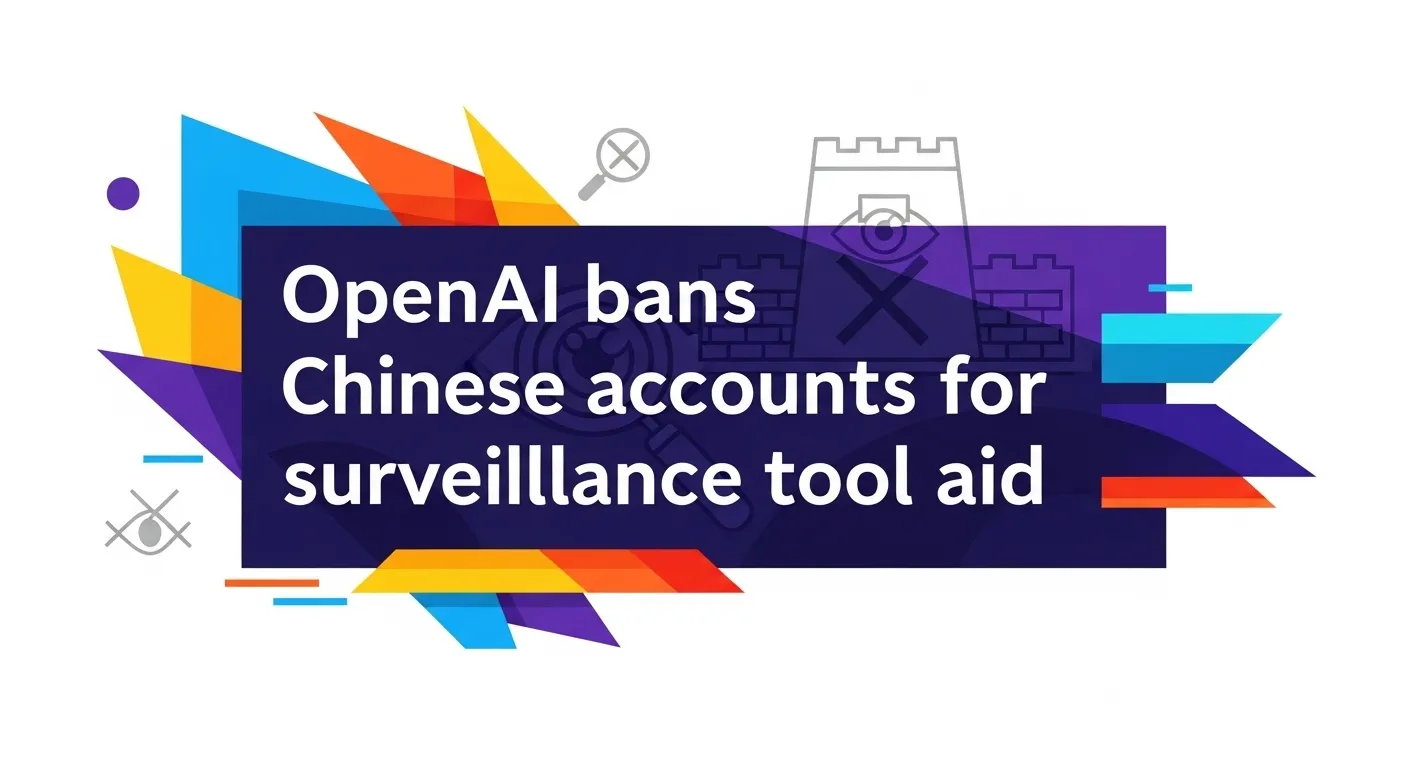What Is “OpenAI bans Chinese accounts for surveillance tool aid”?
In early October 2025, OpenAI said it shut down several ChatGPT accounts suspected of ties to Chinese government-linked actors after those users sought proposals for “social media listening” and other monitoring concepts — activity OpenAI says violates its national security and platform misuse rules. The company detailed these actions in a public threat report and through media briefings, noting it also disrupted other state-linked clusters probing phishing, malware, and influence operations. In plain English: OpenAI is trying to stop its models from being used to design authoritarian surveillance or cyber-offense playbooks.
How It Works
AI safety enforcement on big model platforms typically follows a loop:
- Detection: Signals include unusual prompt patterns, language/region clusters, or requests that trip policy filters (e.g., mass monitoring of political speech).
- Attribution & Review: Internal teams correlate technical indicators and behavior with public reporting or known threat clusters, then determine whether use violates terms.
- Action: Accounts are banned, prompts/outputs may be red-teamed for model improvements, and policy guardrails are tuned (e.g., tightened refusals for surveillance/tooling requests).
- Disclosure: Platforms publish threat reports to warn the ecosystem and set expectations for future enforcement.
Benefits & Use Cases
- Platform integrity: Visible bans signal that AI providers won’t tolerate state-linked attempts to design surveillance systems.
- Risk reduction for users: Stricter guardrails lower the chance that everyday prompts surface sensitive how-to content for cyber abuse or mass monitoring.
- Policy clarity: Public threat reports give businesses a clearer line between acceptable analytics (e.g., brand monitoring with consent) and prohibited surveillance designs targeting citizens or minority groups.
Costs/Pricing
Bans themselves don’t change sticker prices, but they do influence compliance costs and vendor selection:
- Compliance overhead: Teams building social media analytics must document lawful bases, consent, and data provenance to avoid tripping provider policies.
- Tool choice: If a use case veers toward profiling or political monitoring, expect refusals — and factor time for policy-safe redesigns.
- Data sourcing: Legitimate monitoring (e.g., customer care) should rely on permitted, licensed, and opt-in data streams — often pricier, but safer.
Local Insights (GEO)
For readers in South & Southeast Asia (including Bangladesh): Social listening for customer service or brand sentiment is common, but scraping personal data at scale, profiling activists, or tracking political speech can violate platform rules and local regulations. Work with regional legal counsel, ensure user consent where applicable, and document your compliance posture before integrating any LLM into monitoring workflows.
Alternatives & Comparisons
- OpenAI: Increasingly assertive enforcement; detailed public threat reporting; stricter refusals on surveillance-style prompts.
- Other foundation models (e.g., Google, Anthropic, Meta): Similar policies against unlawful surveillance and cyber misuse, with different refusal behaviors. Enterprises should pilot across vendors and choose the one whose safety rails align with governance needs.
Step-by-Step Guide
- Define the line: Write down your use case and explicitly exclude surveillance, political targeting, or tracking of protected classes.
- Choose compliant data: Prefer first-party, permissioned, or licensed streams. Avoid gray-area scraping and shadow profiles.
- Harden your prompts: Use policy-aware prompt templates. Add “do not” constraints (no identification of private individuals, no political profiling, no targeted repression).
- Add human review: Route sensitive outputs to compliance reviewers; log decisions for audits.
- Vendor governance: Keep an updated register of model providers, their terms, and refusal patterns; re-run risk reviews after major model updates.
FAQs
Is “OpenAI bans Chinese accounts for surveillance tool aid” worth paying attention to?
Yes. It’s a bellwether: AI vendors are actively policing state-linked misuse. If your analytics or OSINT projects touch public conversations, expect sharper guardrails and more documentation.
How long does enforcement take?
Enforcement cycles vary, but providers increasingly publish regular threat reports and take rapid action once patterns are confirmed. Build in time for policy reviews.
Are there risks if my team builds social listening tools?
There can be. The moment a tool targets political speech, activists, minorities, or mass profiling, it’s likely to violate platform rules — and may raise legal issues. Keep it user-consented, purpose-limited, and privacy-preserving.
Bottom Line
AI platforms are drawing a sharper line: customer support analytics, OK; authoritarian surveillance, absolutely not. If you work with social data, design for privacy and compliance from day one — or expect your prompts (and accounts) to hit a wall.
Sources
- Reuters — OpenAI bans suspected China-linked accounts for seeking surveillance proposals (Oct 7–8, 2025 coverage)
- The Register — OpenAI bans some China-linked accounts using AI for surveillance
- The Independent — China using ChatGPT for ‘authoritarian abuses’, OpenAI claims
- Gadgets360 — OpenAI bans China-linked accounts for mass surveillance attempts
- OpenAI — Disrupting Malicious Uses of AI: October 2025 (Threat Report)
- NPR — OpenAI takes down covert operations tied to China and other countries (June 2025)

